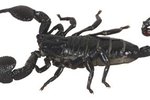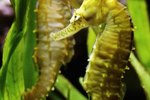Reptiles consist of crocodiles, turtles, tortoises, lizards, snakes and chameleons. Fertilization occurs inside the female body, just as it does in mammals. Reptiles, however, consist of two different groups: those who lay eggs, and those who birth live young. The fertilization process, however, remains the same for both types.
Oviparous
Oviparous reptiles lay eggs. Most reptiles fall into this category, according to Margaret A. Wissman, D.V.M. Before laying her eggs, the female is called gravid. Since she doesn’t hold actual live young, experts do not call her pregnant. These reptiles include crocodiles, most snakes, lizards, and turtles.
Viviparous
Viviparous reptiles carry and give birth to live young. When she holds her young experts call her pregnant. This minority group of reptiles includes some snakes like gartners and vipers, and the blue tongued skink, says Wissman.
Fertilization
Fertilization for both oviparous and viviparous reptiles occurs inside the female. First they conduct a courting ritual which sometimes includes male color displays and mating dances. The male then inserts his penis or hemipene into the female cloaca, says Wissman. Reptiles use the cloaca for excreting digested food and reproduction.
Timing
First the female produces the eggs. Then the male reptile fertilizes the eggs and they pass through her oviduct to receive protective membranes and a shell. Once the fertilized egg gets a shell, the reptile lays the eggs, says Washington University Medical School. The female can lay many eggs at one time.
Storage
Female reptiles store sperm for up to six years to use for future eggs, according to Wissman. That means the female can produce, fertilize, and lay her own eggs without the aid of a male as long as she has stored sperm from a previous male encounter.





